Coinciding with the Vesak celebrations on May 19
The following article was contributed by the Embassy of India in Seoul to The Korea Post for publication which is also carried by the Korean-language Internet edition (www.koreapost.co.kr) as well as on the English Internet (www.koreapost.com). --Ed
The Embassy of India in Seoul, in collaboration with the authorities of the Tongdosa Buddhist Temple in Yangsan-si, Gyeongsanganm-do, organized a series of events in connection with the gift of a statue of Lord Buddha by the Indian Council for Cultural Relations (ICCR) to the people of the Republic of Korea.

This included a handing-over ceremony at the Embassy of India in Seoul on April 30, 2021, an enshrining ceremony of the statue in Tongdosa on May 16, 2021 and a ceremony to dedicate the statue to the Korean people, coinciding with the Vesak celebrations on May 19, 2021.
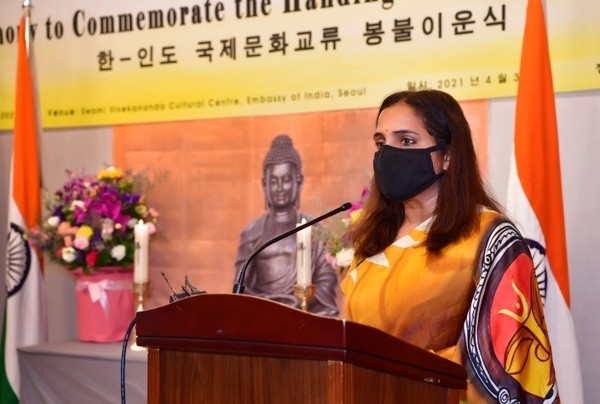
The statue was handed over in a ceremony at Swami Vivekananda Cultural Centre, Embassy of India, Seoul, by Ambassador Sripriya Ranganathan of India in Seoul to Head Monk of Tongdosa, Ven. Hyeonmun on April 30, 2021. The enshrining ceremony of the Lord Buddha Statue was held at Tongdosa on May 16, 2021.
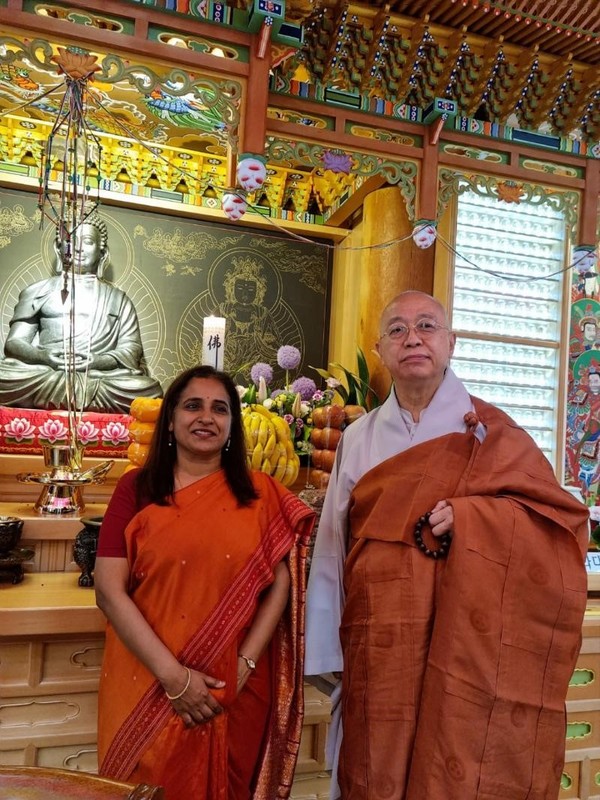
During the ceremony, Ambassador Ranganathan highlighted the central importance of Buddhism in promoting India-Korea cultural relations and people-to-people linkages over the centuries. ICCR Director General Dinesh K. Patnaik, in his message, emphasized that temples like Tongdo-sa bring the teachings of Lord Buddha to the world and celebrate the power and goodness of Buddhism all over the world.
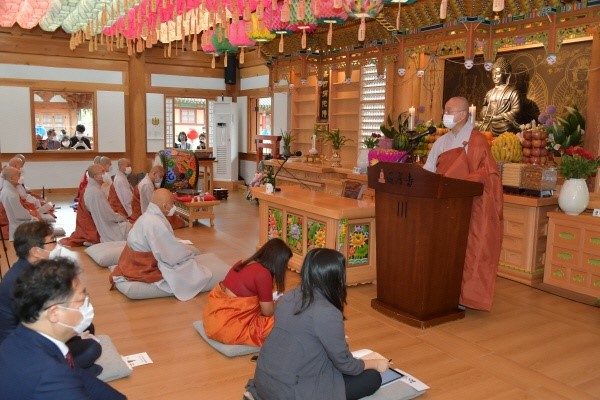
On the occasion of the Korean Vesak celebrations on May 19, Indian Vice Foreign Minister Ms. Riva Ganguly Das dedicated the statue to the people of ROK emphasizing the abiding relevance of the teachings of the Buddha which provide all mankind the inner strength to cooperate for the common good of all and in overcoming the ongoing COVID-19 pandemic.
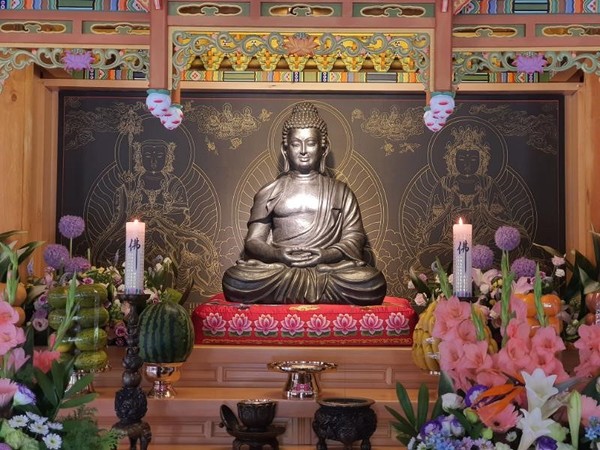
She also announced the launch of a virtual exhibition on "Bodhicitta: Interweaving Buddhist Art Traditions from India across Asia”, curated by National Museum of India and presented in association with SVCC, Embassy of India, Seoul and the Korean Buddhist Jogye Order.
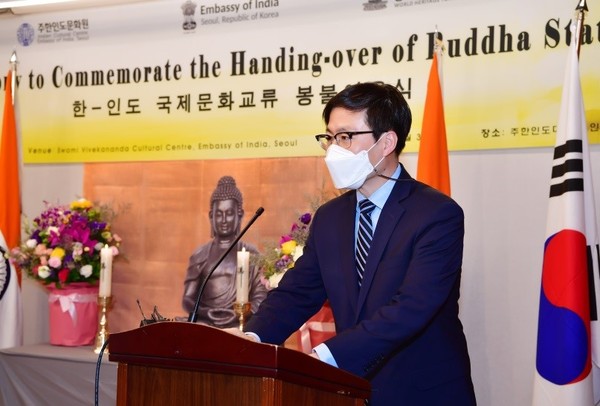
Tongdosa Temple itself enjoys a special connection with India, having been built by monks who had travelled to India and become part of the Buddha’s close circle of disciples.
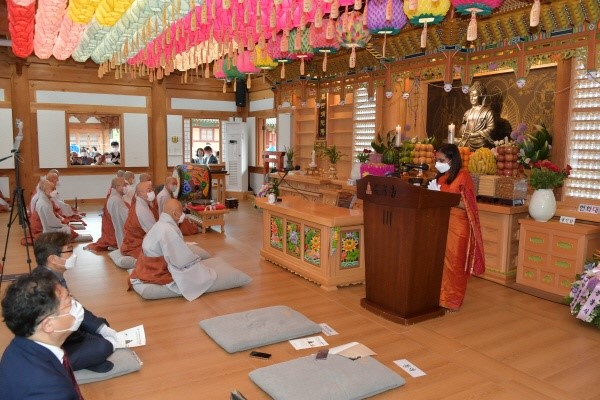
The ceremonies on this occasion were graced by with the presence of prominent Korean dignitaries. They included: Ven. Hyeonmun, head monk of Tongdosa; Yeo Han-gu, secretary to the president for New Southern and Northern Policy; members of National Assembly of Korea (Reps. Park Seong-jun, Jeong Pil-mo, Choi Jong-youn, Choi In-ho, Yoon Geon-young, Yoon Young-seok, and Kim Doo-Kwan & Kim Jeong-ho.
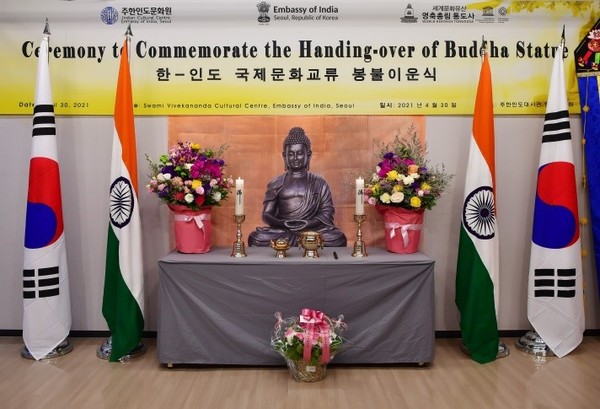
There also were Deputy Minister Cho Hyun-rae of Culture, Sports and Tourism (Religious Affairs Office), Mayor Kim Il Kwon of Yangsan city; Vice Governor Park Jong-Won of Gyeongsangnam-do and Chairman Lee Jae-young of the Yangsan District Chapter of the ruling Democratic Party.
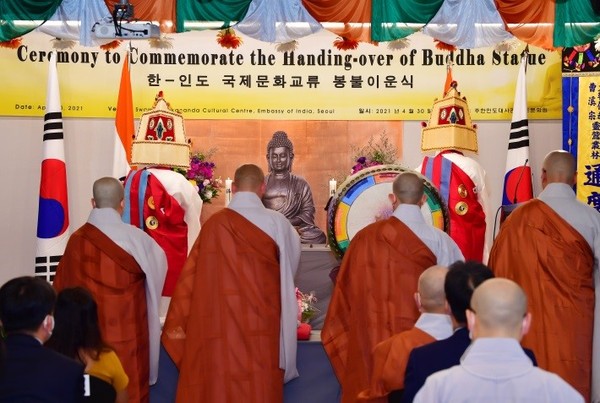
The gift of the statue is testimony to the long-standing friendship and civilizational linkages between the people of India and ROK and the historic ties between Tongdosa Temple and India.
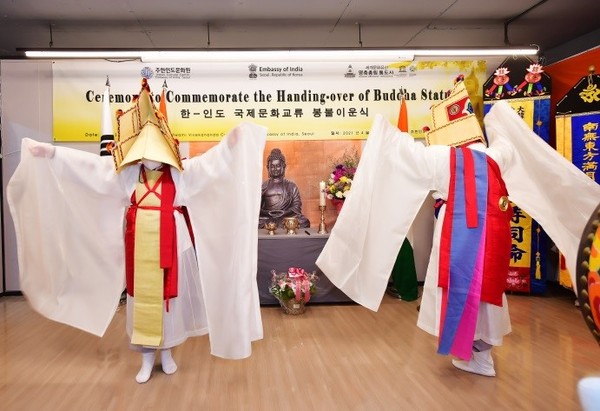
About the Tongdosa Buddhist Temple:
Tongdosa temple is one of Korea's five "Palace of the Jewel of Nirvana" temples, where the relics of the Buddha substitute for a statue. Precept Master Jajang brought the relics, including part of the Buddha's robes, from China and enshrined them (646C.E). Consequently, the temple represents the Buddha of Korea's three Jewel Temples and it also is a Full Monastic Training Temple, with Yeongchuk Monastery.
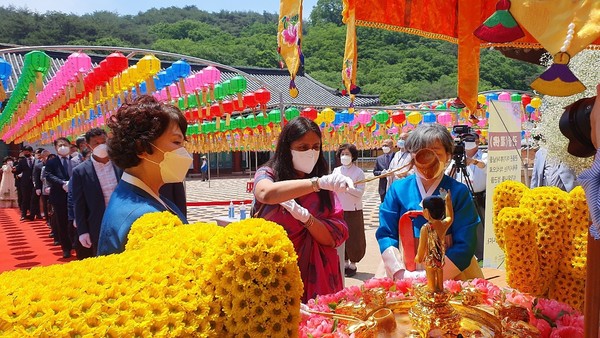
Mt. Yeongchuk surrounding the temple resembles Mt. Grdhrakatu where the Buddha delivered the Lotus Sutra and Tongdo, the name of temple means "Pass through (to) Enlightenment." In addition, all monks have to pass through the Diamond Precept Platform(Geumganggyedan) at the temple, where ordinations take place.
It is traditionally a Seon Temple which has had many famous monks including Seon Master Gyeongbong.

Before entering the temple compound, the visitor has to pass over the "windless" bridge which leads into a forest of "windless" pines. Most temples have a bridge-often over a wonderful rushing torrent- before the gates to the compound.
There are numerous temple buildings between the Iljumoon(one pillar gate) and the Daeungjeon(Main Buddha Hall). Of special interest is the Tongdosa Museum that is the only one in the world dedicated to the preservation of Buddhist temple paintings.
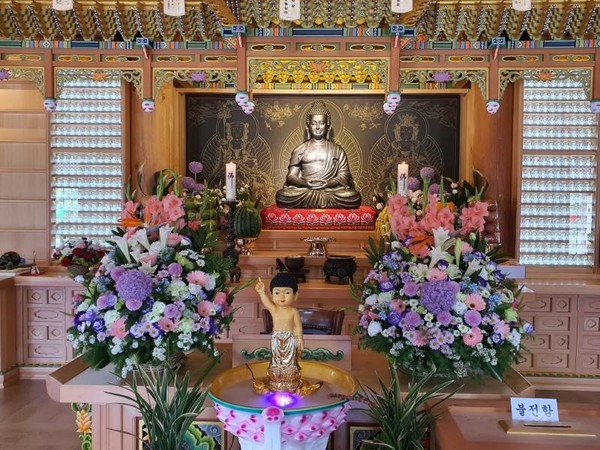
As far as the number of buildings is concerned, there are over 50 temple buildings inside of temple compound, the largest temple in Korea.
Many of these ancient buildings look today just as they did in the past. There are many small 20 hermitages scattered around the temple grounds. The river-valley and forest near Tongdosa are an ecological paradise.

